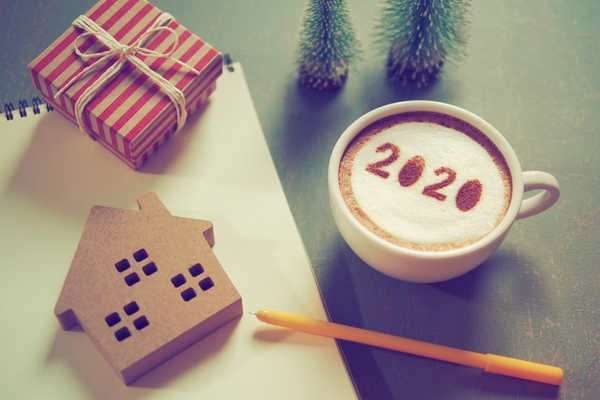It is a new year with new projects on the horizon. That means it’s time to start planning your 2020 home improvement resolutions. Here are four great ones to put on your list, courtesy Danny Lipford of Today’s Homeowner.
1. Give Your Home a Check-Up
First, take a look around your house and make sure everything is operating smoothly. You can keep your furnace and air conditioner in working order by giving them annual checkups. Air conditioners collect dust and debris over time, which can reduce your unit’s efficiency. Be sure to replace your filters to avoid any buildup.
Next, make sure your fireplace is maintained for the winter. It is important to practice fireplace safety no matter what kind of fireplace you have.
You’ll also need to check your home’s water meter for any plumbing leaks. Here’s how to go about it:
- Turn Off All Water. First, make sure there isn’t any water being used inside or outside your home. This includes lawn or garden irrigation, toilets, clothes washers, dishwashers, faucets, icemakers and automatic backflow cleaning in whole house water filters.
- Check Flow Indicator. Open the cover on the water meter at the street to see if it has a flow indicator. This is a small rotating wheel on the meter that can detect even small amounts of water flow. If the flow indicator is moving, you have a leak somewhere in your house or yard.
Check your toilets for leaks as well. There are two ways to do this:
- Toilet Leak Test #1: Remove the tank lid, and pour a small amount of food coloring in the tank to color the water in the tank. If colored water appears in the bowl without flushing the toilet, you have a leak between the tank and bowl.
- Toilet Leak Test #2: Turn the water to the toilet off at the shutoff valve. Remove the lid to the tank and note or mark the water level in the tank. Wait several hours without flushing the toilet, then check the water level in the tank. If the water level is lower, there’s a leak between the tank and bowl.
2. Save Energy, Save Money
There are several ways to improve the energy efficiency of your home and lower your utility bills.
- Insulation: Depending on your climate and the type of insulation used, your attic should have from 12 to 16 inches of insulation (R-38 to R-49). Common types of insulation include batts, rolls or blown-in fiberglass or cellulose, as well as mineral wool and sprayed foam insulation.
- Home Energy Audit: Have an energy audit conducted to identify problem areas in your home. These could include leaky ductwork, worn weather stripping around windows and doors, and lack of insulation.
- Water Heater: Consider replacing your existing water heater with either a tankless, solar, heat pump or high-efficiency water heater.
- Windows: Older, single-pane windows can account for up to half the heating and cooling loss in your home, so consider replacing them with insulated, glass windows with a low-E coating.
3. Check Your Roof
It’s important to clean and inspect your roof regularly since roof leaks can cause major damage to your home, including water damage, rot and mold. Safety First: If the roof is high or steep, consider inspecting it from the ground using binoculars.
Start by cleaning the roof of leaves, limbs or any other debris, paying particular attention to problem spots like chimneys, dormers and valleys.
Next, inspect the flashing for damage. Use masonry caulk to seal gaps where the flashing attaches to bricks and urethane caulk to repair the flashing itself.
And don’t forget those gutters and downspouts! They need to be free of leaves and debris or water could go where it shouldn’t, causing foundation damage.
4. Get Organized
Closets, offices, the garage — there are probably several rooms in your house that could use a little TLC.
The first step in getting organized around your house is to throw away all the stuff you don’t need. You might be surprised at how much you can do without, and now’s the time to get rid of it.
A garage is great for storing seasonal items, sports equipment, tools, lawn and garden supplies, paint, bikes and more. But if you’re not careful, your garage will become so cluttered, it will be impossible to park a car in it.
Also consider reclaiming your kitchen, attic or closets with a number of organization projects including:
- Kitchen: Add wire shelves to the pantry for cans; use hooks to hold rolls of sheet goods, and add a plastic bag storage container.
- Attic: Install freestanding metal shelving for storage containers and add hanging rods for out-of-season clothing.
- Closet: Add 16-inch-wide wide shelves to a closet to increase storage space.
—
Photo Credit: Boontoom Sae-Kor / Shutterstock.com
